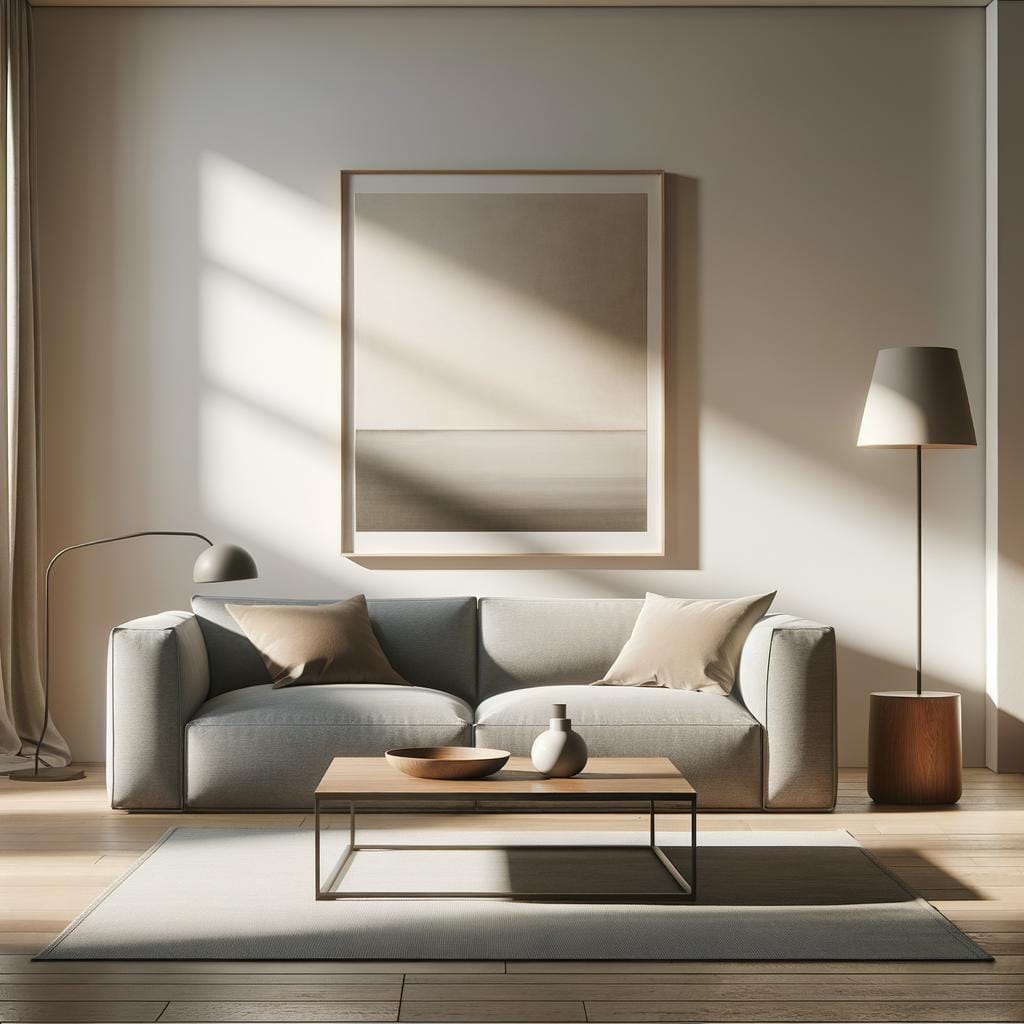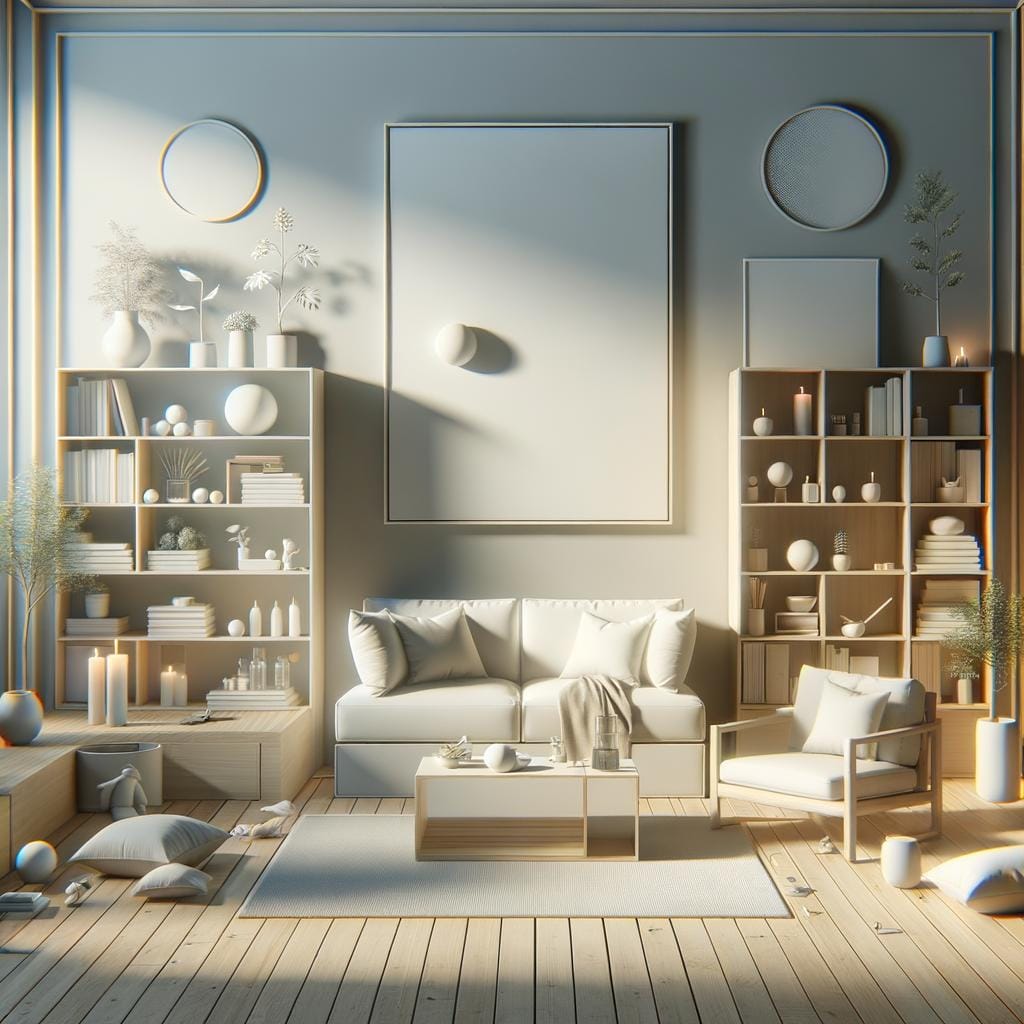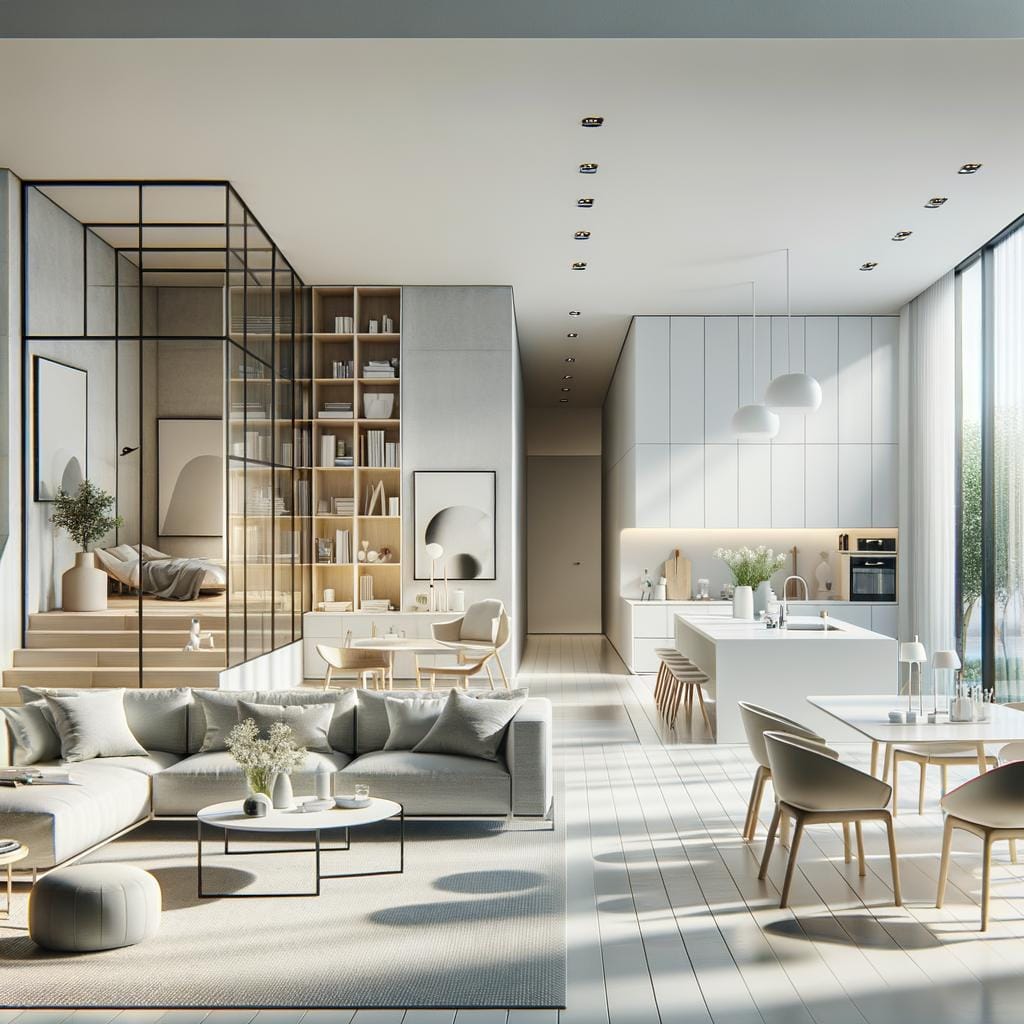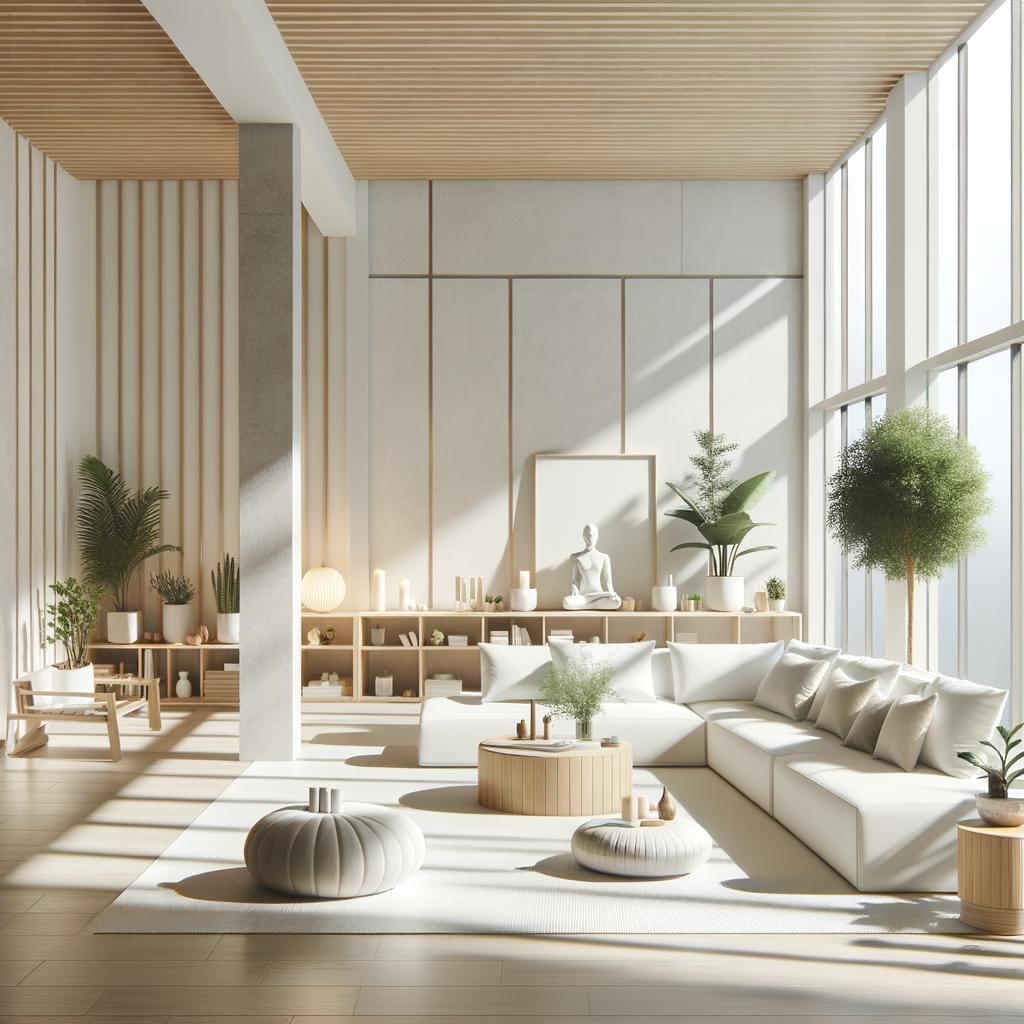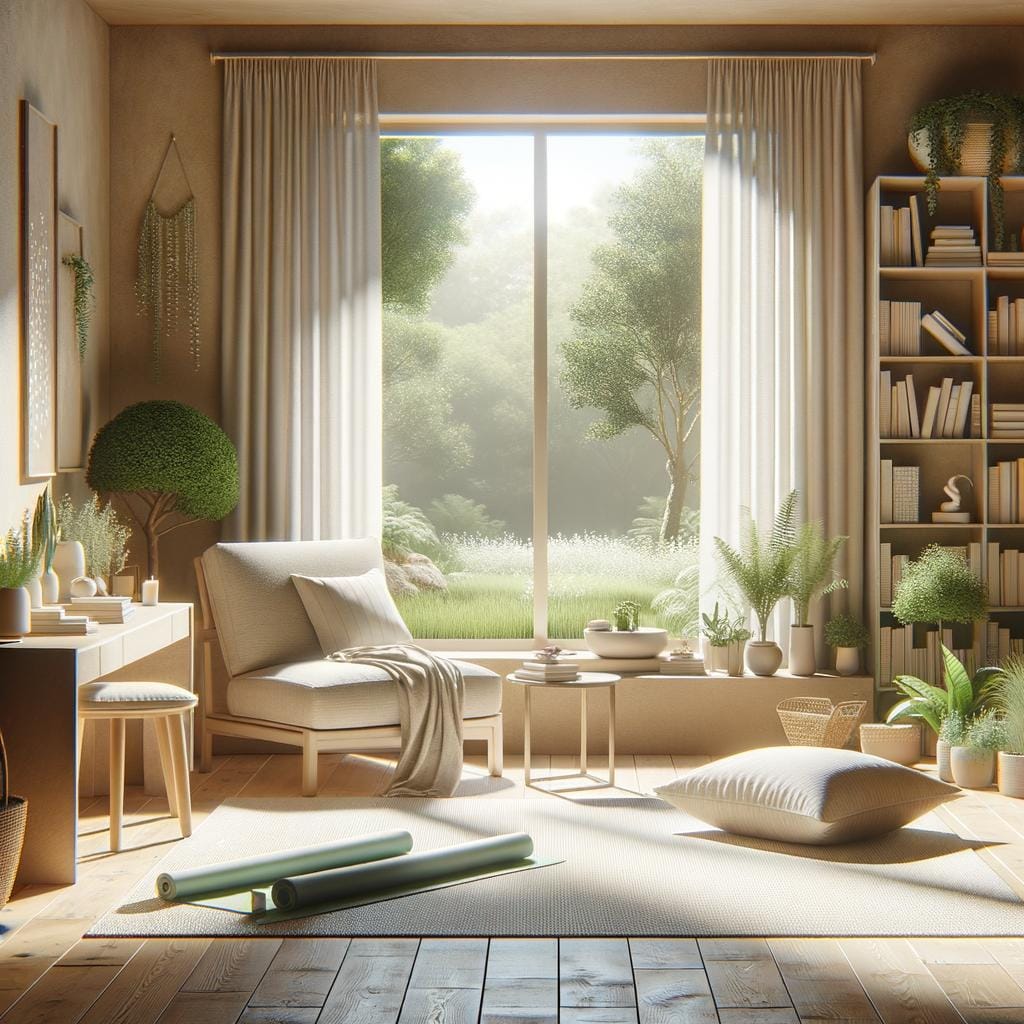Minimalism in home decor is a design philosophy that focuses on simplicity, functionality, and decluttering. The key principle is to create a space that is clean, tranquil, and visually appealing by minimizing decorative items. This approach emphasizes the idea of “less is more” and encourages individuals to only keep items that serve a purpose or bring joy.
By reducing the number of decorative items in your living space, you can experience a range of psychological benefits. A clutter-free environment has been shown to reduce stress, improve focus, and increase feelings of calmness and relaxation. Embracing minimalism can also help promote mindfulness and clarity in thinking by eliminating distractions and excess visual stimuli.
If you find yourself surrounded by an overwhelming amount of decorative items, it may be time to declutter and minimize. Common signs that indicate you have too many decorative items include feeling overwhelmed by visual clutter, struggling to find things in your home, or constantly tidying up without feeling a sense of satisfaction.
In the next section, we will explore how you can start the process of decluttering and creating a minimalist home decor style that aligns with your personal preferences.
The Psychological Benefits of Having Fewer Decorative Items in Your Living Space
The concept of minimalism in home decor has gained popularity in recent years, emphasizing the idea of “less is more.” By minimizing decorative items in your living space, you can create a calming and organized environment that promotes a sense of clarity and tranquility. Having fewer items not only streamlines your living space but also has various psychological benefits.
One of the key psychological benefits of having fewer decorative items in your home is reduced stress and anxiety. Cluttered and overly decorated spaces can overwhelm the senses, leading to feelings of unease and restlessness. By simplifying your surroundings, you can create a peaceful atmosphere that allows you to relax and unwind after a long day. This minimalist approach can also help improve your focus and concentration, as there are fewer distractions in your environment.
Moreover, minimizing decorative items can promote mindfulness and intentionality in your daily life. Each item in your living space becomes more meaningful when carefully curated, allowing you to appreciate its beauty and functionality. This mindful approach to decorating encourages you to be more present in the moment and develop a deeper connection with your surroundings. As a result, you may find yourself feeling more balanced, content, and inspired in your minimalist living space.
| Psychological Benefits | Having Fewer Decorative Items |
|---|---|
| Reduced Stress | Creating a calming environment |
| Promotes Mindfulness | Cultivating intentionality |
| Improved Focus | Less distractions for better concentration |
Common Signs That Indicate You Have Too Many Decorative Items
Decorating your living space with various items can add personality and charm to your home. However, there is a fine line between creating a cozy atmosphere and overwhelming your space with clutter. Recognizing the signs that indicate you have too many decorative items is the first step towards achieving a more minimalist decor style.
Here are some common signs that you may have an excess of decorative items in your home:
- Difficulty in finding and accessing essential items
- Feeling overwhelmed or anxious in your space
- Frequent dusting and cleaning required due to the number of decor pieces
- Lack of visual cohesion or harmony in your home
- Sentimental attachments preventing you from letting go of unnecessary items
If any of these signs resonate with you, it may be time to consider decluttering and minimizing the decorative items in your living space. By doing so, you can create a more serene environment that promotes relaxation and clarity.
Taking a mindful approach to minimize decorative items involves evaluating each piece’s value and purpose in your home. Consider the following steps to start decluttering effectively:
- Assess each item individually and determine its significance or utility.
- Create designated areas for displaying decor pieces to avoid overcrowding.
- Set realistic goals for decluttering, such as removing one item per day or week.
By recognizing the signs of excess in decorative items and taking proactive steps to declutter, you can pave the way for a more minimalist and organized living space that enhances your overall well-being.
How to Start Decluttering and Minimizing Decorative Items in Your Home
Minimalism in home decor is not just a trend but also a lifestyle choice that focuses on simplicity, functionality, and the intentional use of space. By minimizing decorative items in your living space, you can create a more peaceful and organized environment that promotes clarity of mind and reduces stress.
If you find yourself feeling overwhelmed by the clutter of too many decorative items, it may be time to start decluttering and embracing a more minimalist approach to your home decor.
Assessing Your Current Decor
Begin by taking a critical look at the decorative items you currently have in your home. Identify which pieces bring you joy or serve a practical purpose and which ones are simply taking up space. Consider whether each item aligns with your vision for a minimalist living space and if it adds value to your overall decor theme. This process will help you prioritize what should stay and what needs to go as you begin the decluttering journey.
Implementing a Decluttering Strategy
Once you have assessed your current decor situation, create a plan for decluttering and minimizing decorative items in your home. Start by tackling one room or area at a time to avoid feeling overwhelmed. Sort through each item systematically, categorizing them into keep, donate, repurpose, or discard piles. Be honest with yourself about whether each item truly adds value to your living space or if it simply contributes to unnecessary clutter.
Creating an Intentional Space
As you continue decluttering and minimizing decorative items in your home, focus on creating an intentional space that reflects your personal style and values. Curate a collection of essential decorative pieces that bring you joy and complement the overall aesthetic of your living space. By thoughtfully selecting each item that remains, you can design a minimalist decor style that still showcases your personality while maintaining a clutter-free environment.
Creative Ways to Repurpose or Donate Unwanted Decorative Items
As you embark on the journey of minimizing decorative items in your home, you may find yourself faced with a collection of items that no longer serve a purpose or bring you joy. In such cases, repurposing or donating these unwanted decorative items can be a sustainable and fulfilling solution.
One creative way to breathe new life into old decor is by upcycling them into functional pieces for your home. For example, an old picture frame can be transformed into a stylish jewelry organizer or a unique wall mirror with some paint and creativity.
Another option to consider is donating your excess decorative items to local charities, shelters, or second-hand stores. By doing so, not only are you decluttering your space, but you are also contributing to those in need while reducing waste. Many organizations accept donations of home decor items such as vases, artwork, and lamps which can find new homes where they will be appreciated.
In addition to upcycling and donating, hosting a decor swap party with friends or family can be a fun way to exchange unwanted items for something new-to-you. This not only gives your decor a fresh update but also allows others to benefit from your unneeded items.
By exploring these creative ways to repurpose or donate unwanted decorative items, you are not only simplifying your living space but also making a positive impact on the environment and those around you.
| Benefits | Examples |
|---|---|
| Sustainable Solution | Upcycling old picture frames into jewelry organizers |
| Contributing to Those in Need | Donating excess decorative items to local charities |
| Social Interaction | Hosting a decor swap party with friends or family |
Tips for Curating a Minimalist Decor Style That Still Reflects Your Personality
Minimalism in home decor is not just about decluttering and having empty spaces. It’s also about curating a space that reflects your personality and brings you joy without overwhelming the senses. Here are some tips on how you can achieve a minimalist decor style that still showcases your unique tastes:
1. Focus on quality over quantity: Instead of filling your space with numerous decorative items, choose a few high-quality pieces that truly speak to you. Invest in furniture, art, or decor items that hold meaning or bring you happiness every time you see them.
2. Embrace neutral colors with pops of accent hues: A minimalist decor style often leans towards neutral color palettes such as whites, grays, and muted tones. To infuse personality into your space, consider adding pops of color through accent pieces like throw pillows, art prints, or small decorative items.
3. Incorporate natural elements: Bring the outdoors inside by incorporating natural elements like plants, wood, or stone into your decor. These elements not only add warmth and texture to your space but also create a sense of calm and tranquility.
4. Display meaningful items strategically: Instead of cluttering surfaces with numerous knick-knacks and decorative items, choose a few meaningful objects to display strategically. Group them together thoughtfully on shelves or trays to create visual interest without overwhelming the space.
By following these tips, you can create a minimalist decor style that still reflects your personality and taste while minimizing decorative items in your living space. Remember that less is often more when it comes to creating a serene and inviting home environment.
The Environmental Impact of Minimizing Decorative Items and Reducing Waste
The impact of minimizing decorative items goes beyond just achieving a clean and organized living space. By reducing the amount of unnecessary items in your home, you are also contributing to minimizing waste and helping the environment.
The production and disposal of decorative items can have a significant environmental footprint, from the resources used in manufacturing to the energy expended in transportation and the eventual disposal in landfills. Therefore, embracing minimalism in home decor is not only beneficial for your well-being but also for the planet.
Reducing Resource Consumption
One of the key benefits of minimizing decorative items is that it helps reduce resource consumption. By choosing to have fewer items, you are decreasing the demand for materials like plastic, wood, glass, and metals that are commonly used in decorative pieces.
This reduction in resource consumption can help lower greenhouse gas emissions associated with resource extraction and manufacturing processes. Additionally, by focusing on quality over quantity, you can invest in well-made pieces that are more durable and long-lasting, further reducing the need for replacements.
Lessening Waste Generation
Another environmental impact of minimizing decorative items is the reduction of waste generation. Often, when our homes are cluttered with too many decorations, we tend to discard or replace them frequently as trends change or our tastes evolve. This cycle of constant purchasing and discarding contributes to the growing problem of waste accumulation in landfills.
By being mindful of what we bring into our homes and consciously choosing to reduce unnecessary decorative items, we can help lessen the amount of waste produced. Additionally, repurposing or donating unwanted decorations instead of throwing them away can further minimize waste generation while giving new life to old items.
Promoting Sustainable Practices
By adopting a minimalist approach to home decor and focusing on quality rather than quantity when it comes to decorative items, you are promoting sustainable practices in your daily life. Minimalism encourages thoughtful consumption and conscious decision-making about what we choose to surround ourselves with.
This mindset shift towards simplicity not only benefits your immediate living space but also sets an example for others on how they can make environmentally-friendly choices in their own homes. Ultimately, by minimizing decorative items and reducing waste, you are contributing to a more sustainable future for generations to come.
Expert Advice on Maintaining a Clutter-Free Home in the Long Term
In conclusion, embracing minimalism in home decor not only creates a visually appealing and calming living space but also brings about numerous psychological benefits. By minimizing decorative items, individuals can experience reduced stress levels, improved focus, and a sense of clarity that can positively impact their overall well-being. Recognizing the signs of having too many decorative items is the first step towards decluttering and creating a more minimalist environment.
As you begin the process of minimizing decorative items in your home, consider repurposing or donating unwanted items to reduce waste and benefit others. Get creative with how you can give new life to old decorations or find deserving recipients who will appreciate them more than you do. Curating a minimalist decor style that still reflects your personality is possible by selecting key pieces that hold sentimental value or align with your aesthetic preferences.
Ultimately, by minimizing decorative items in your living space, you are not only creating a clutter-free environment for yourself but also making a positive impact on the environment by reducing unnecessary consumption. Expert advice on maintaining a clutter-free home in the long term emphasizes the importance of consistent decluttering habits and mindful purchasing decisions. By incorporating these practices into your lifestyle, you can enjoy a more organized and harmonious living space that promotes peace and well-being.
Frequently Asked Questions
How Can I Reduce My Decor?
One way to reduce your decor is by starting with a thorough assessment of each item’s value and significance. Consider keeping pieces that hold sentimental value or are essential to your space, while letting go of items that no longer serve a purpose.
What to Do When You Have Too Much Decor?
When you have too much decor, it’s important to first identify which pieces are adding value to your space and which ones are contributing to clutter. Consider rotating items seasonally, donating or selling excess decor, or creating designated display areas to prevent overcrowding.
How Do You Declutter When You Have Too Much Stuff?
Decluttering when you have too much stuff requires a systematic approach. Start by sorting items into categories such as keep, donate/sell, or discard. Evaluate each item based on its usefulness, condition, and emotional attachment before deciding whether to keep or let go of it.

Hello, I’m April Denton, your go-to expert for all things home decluttering and organization. With over a decade of experience helping individuals transform their living spaces into serene, clutter-free sanctuaries, I am passionate about the life-changing benefits of decluttering. My journey into the world of organization began out of necessity, juggling a busy career and a bustling household. I quickly realized that a well-organized home was the key to a more balanced, stress-free life.

